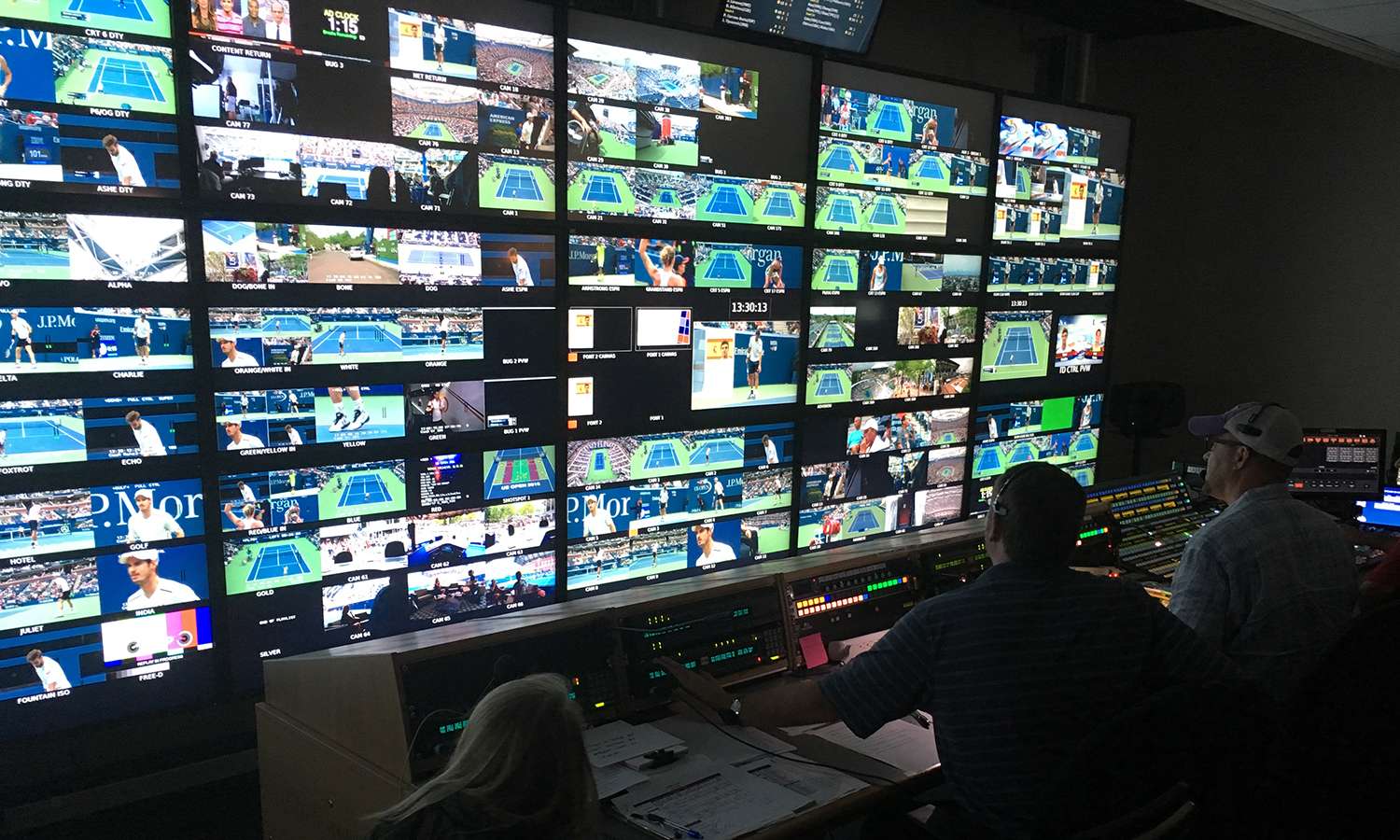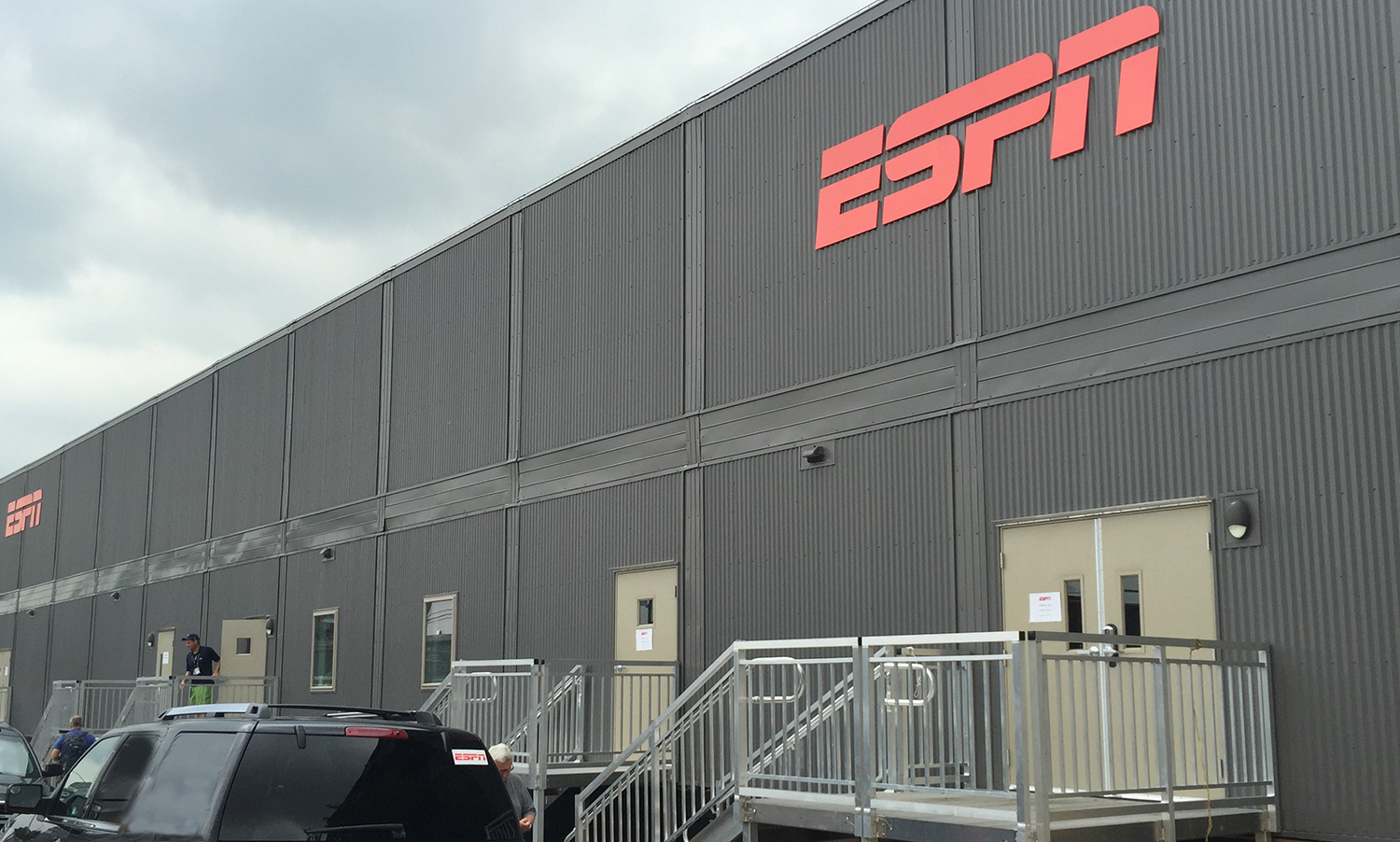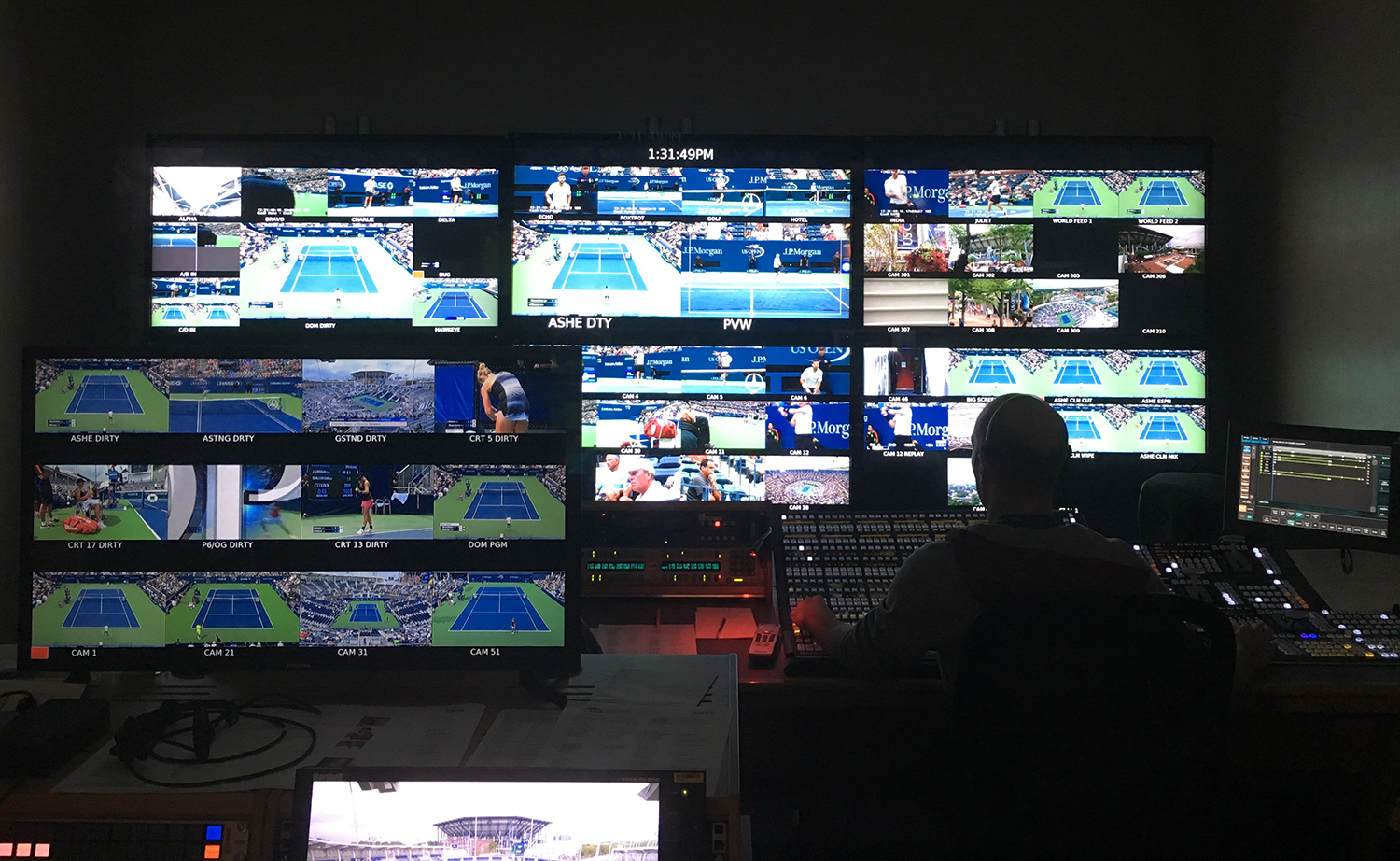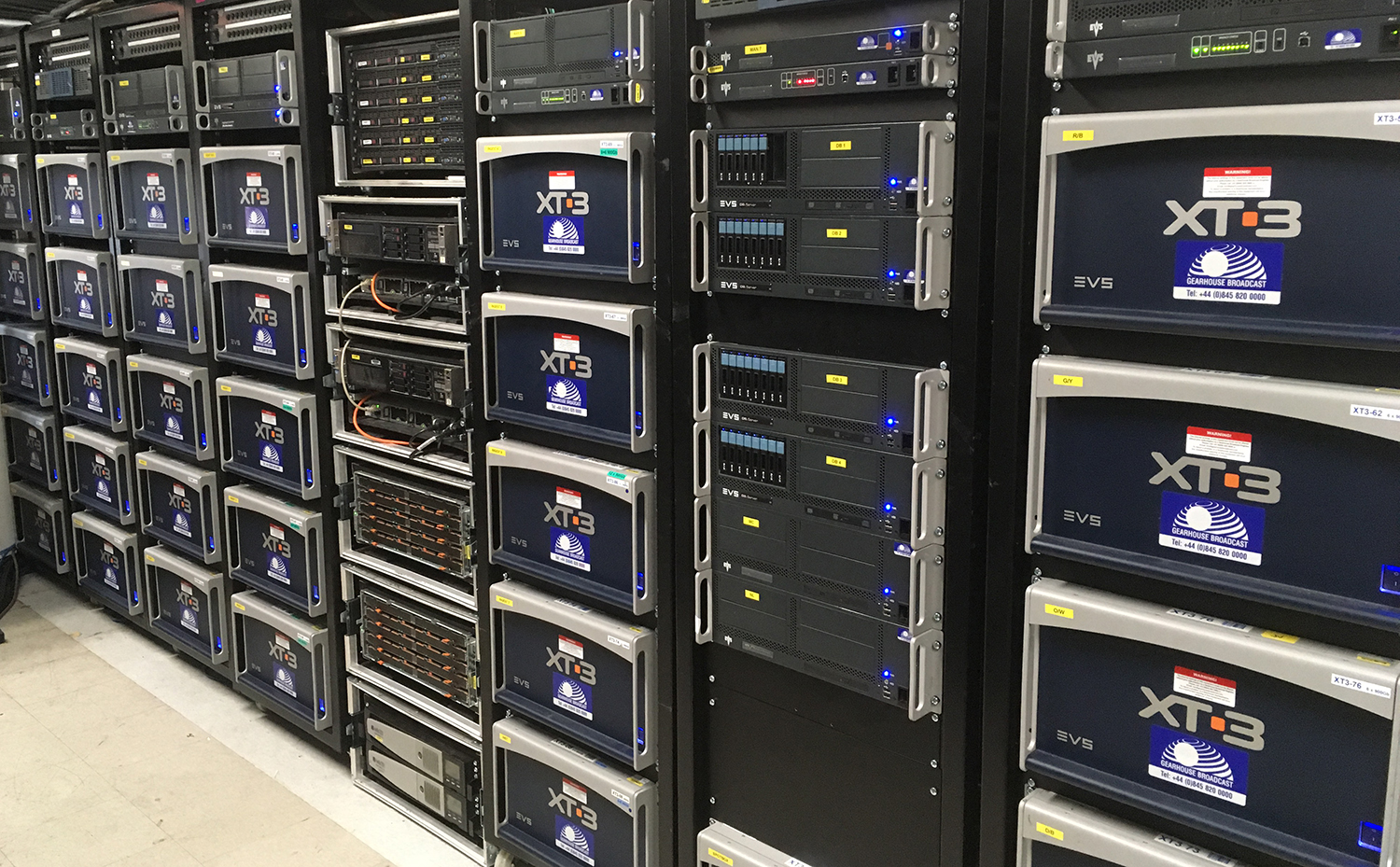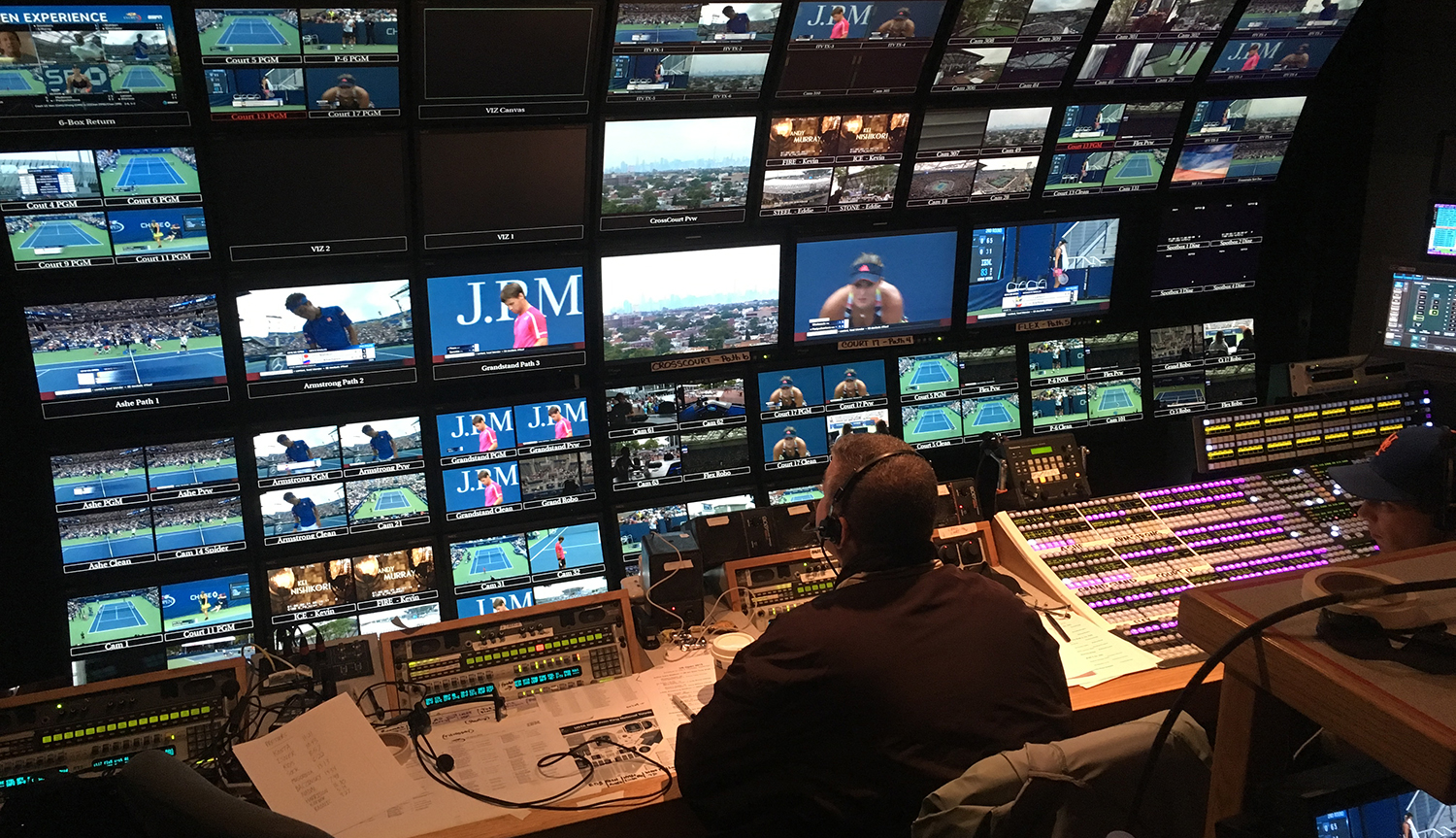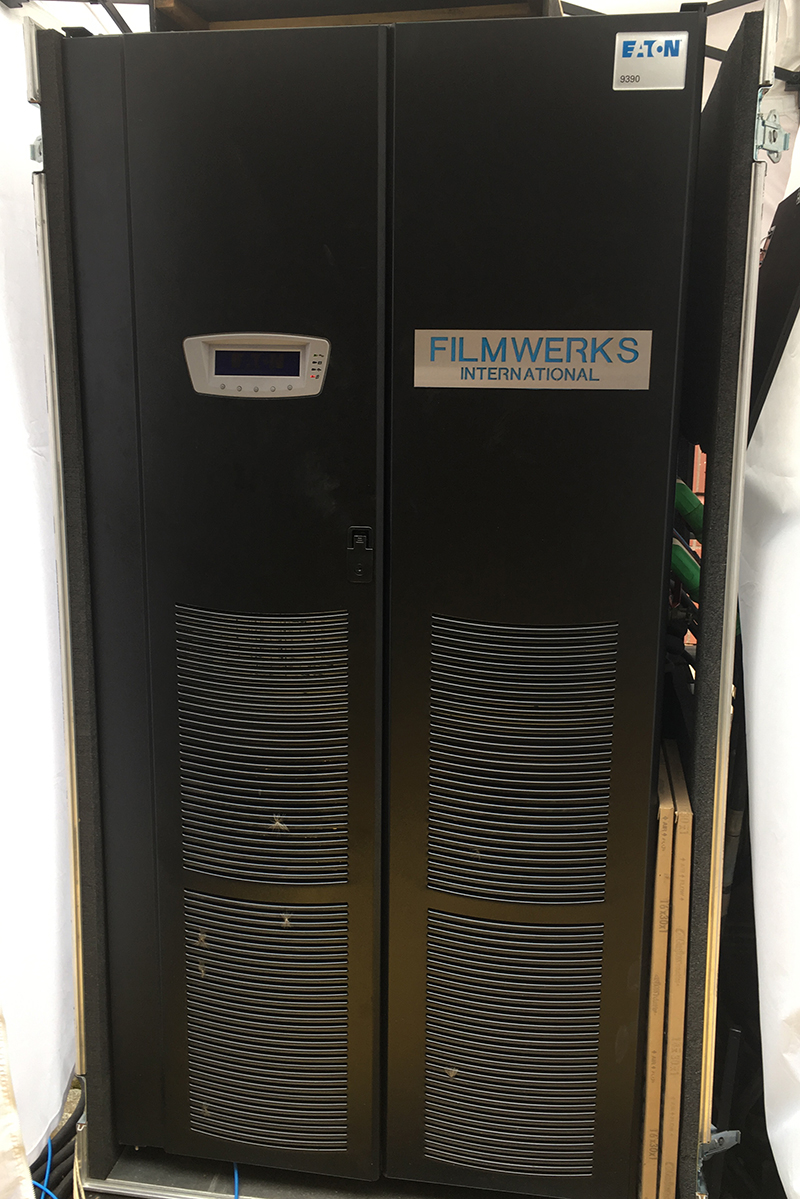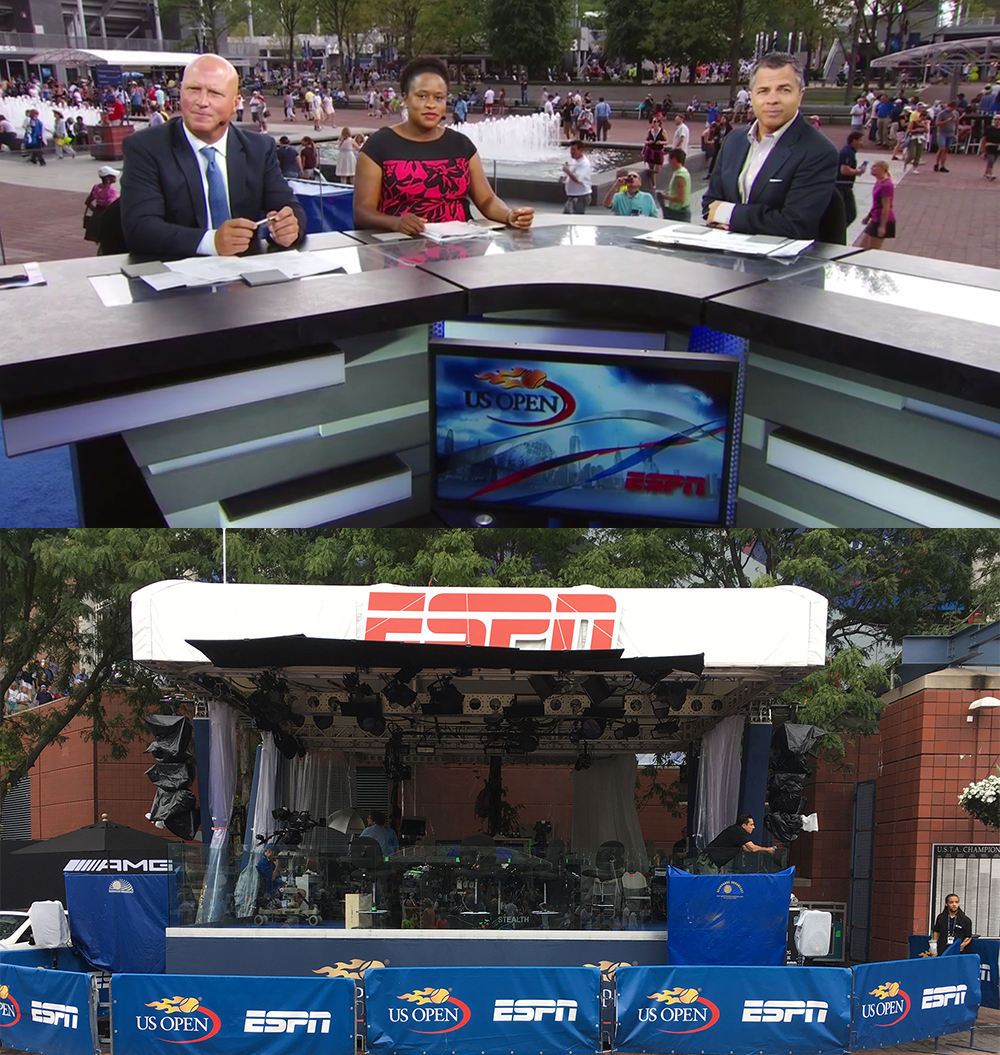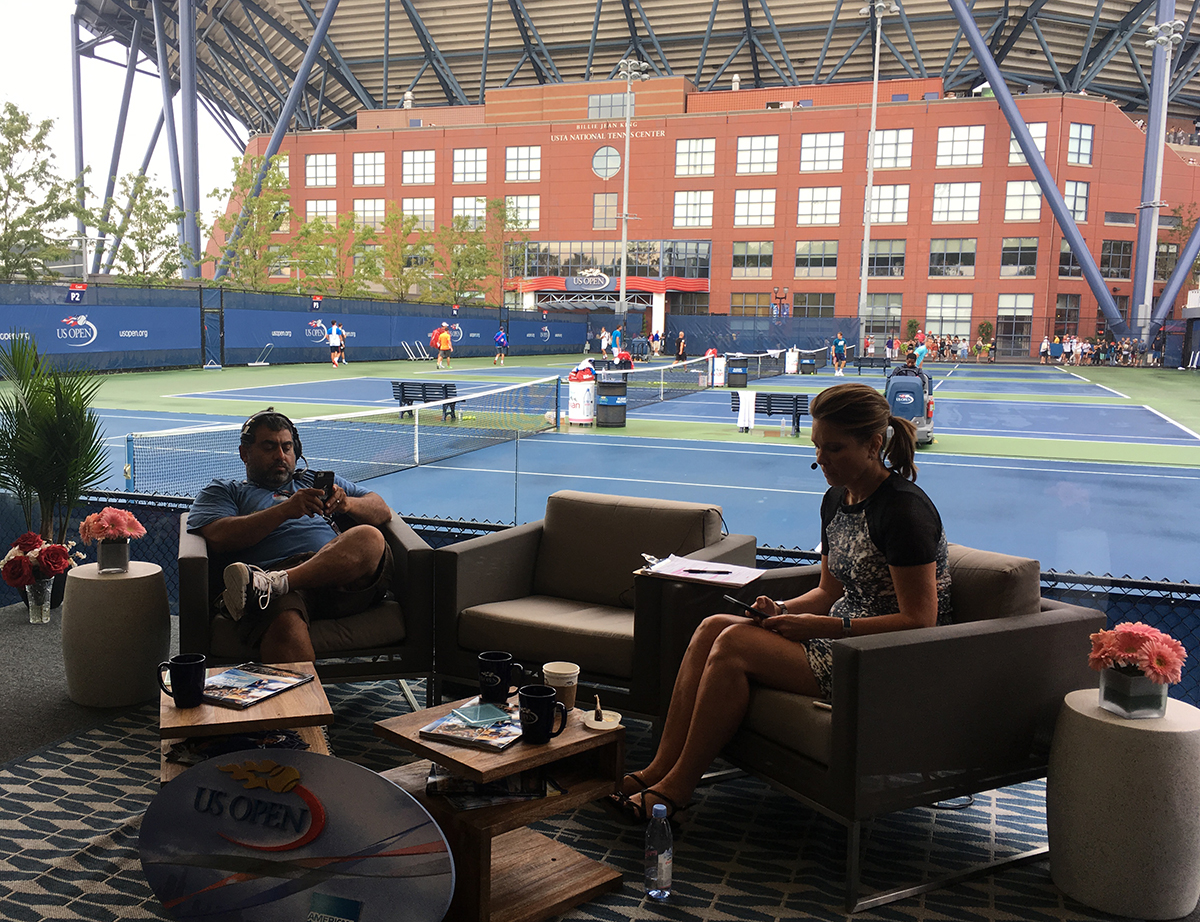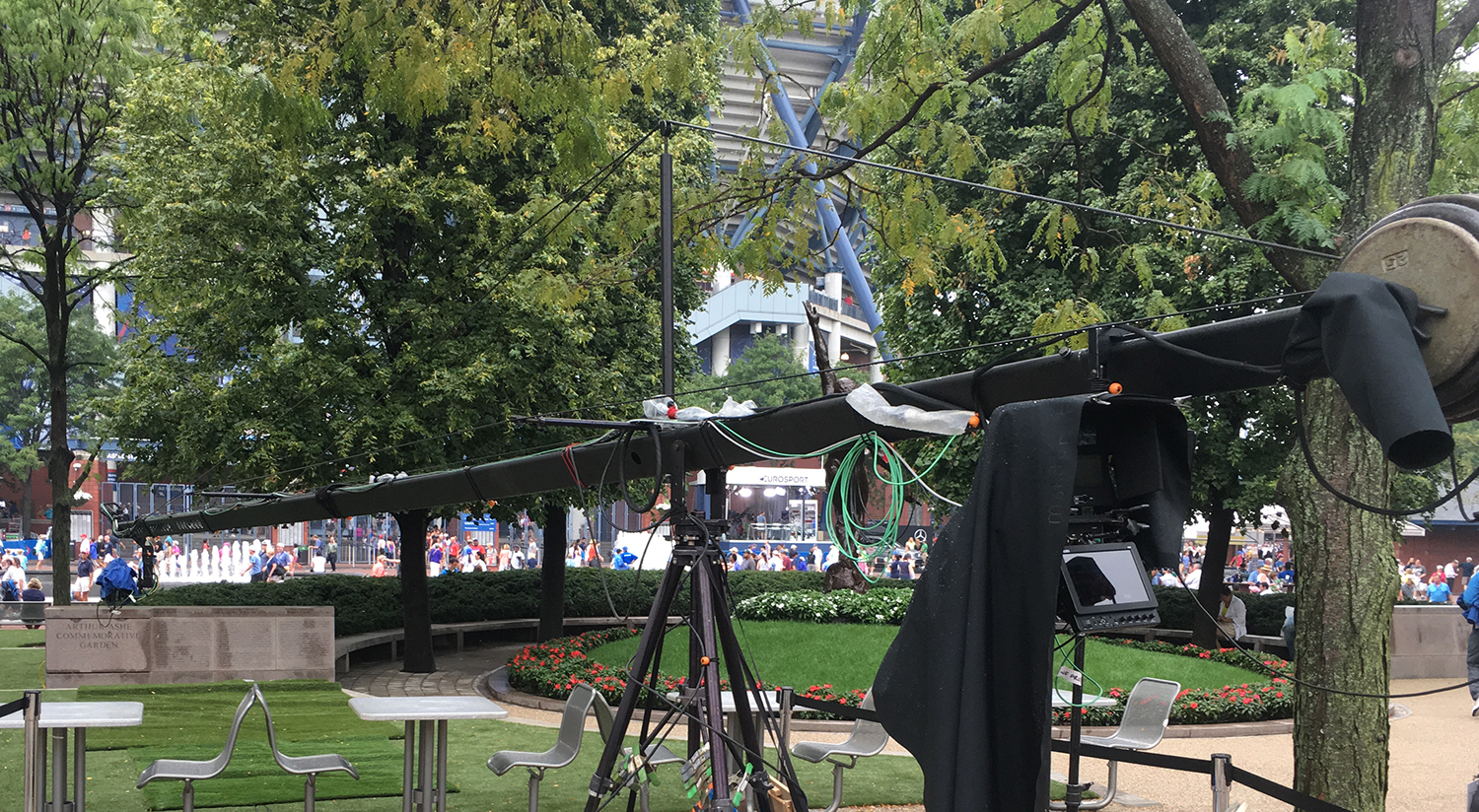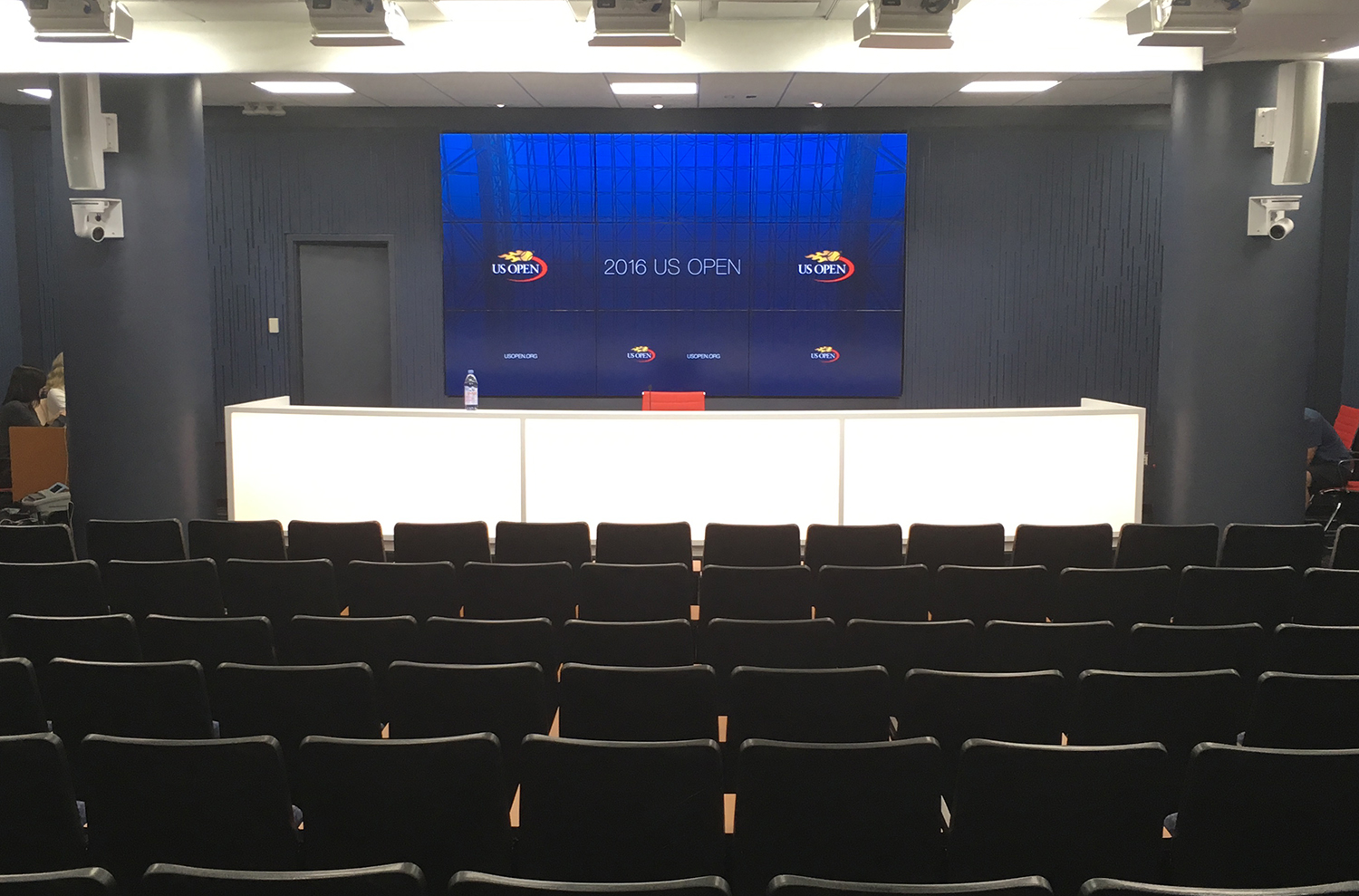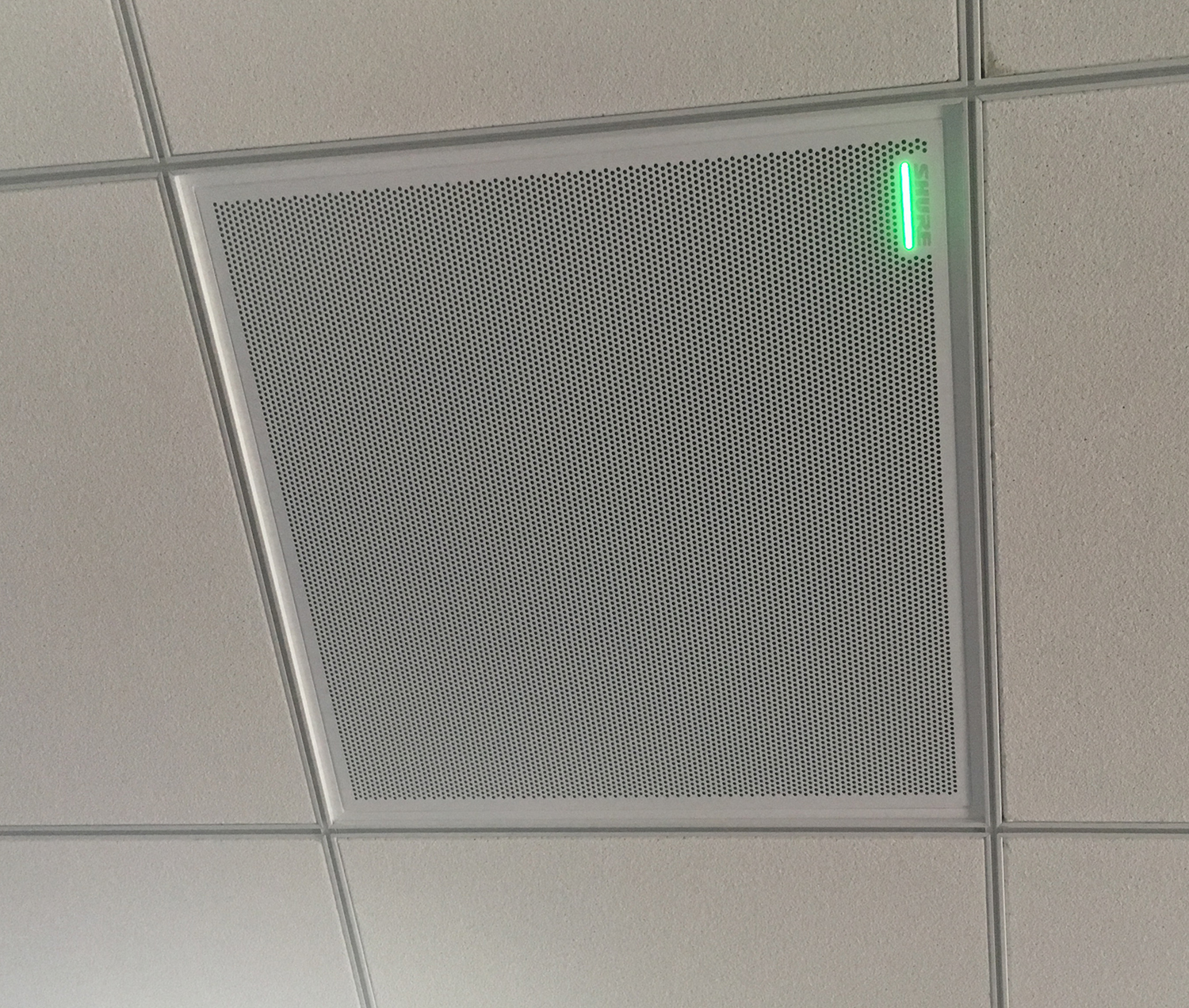Live From the US Open: In Year 2 of Rights Deal, ESPN Looks To Refine, Enhance Production Model
Re-imagined production compound settles in, powers network's total efforts
Story Highlights
In its first year as host broadcaster and sole domestic-rights holder of the US Open in 2015, ESPN transformed the production compound at the USTA Billie Jean King National Tennis Center (NTC) from a cavalcade of broadcasters and trucks into a streamlined two-story production facility and single office trailer across the street. With that extensive infrastructure in place, ESPN is refining its production model at the US Open this year as the NTC debuts a transformation of its own with a new roof on Arthur Ashe Stadium, brand-new Grandstand, and wholly rebuilt South Campus.
“When we went in last year, we didn’t know what we didn’t know,” says ESPN Director of Remote Operations Terry Brady. “This year, we had a much better idea of where things needed to be and how things needed to work. We also learned a lot in terms of how to manage the crew. After our experience last year, we’ve made a lot of small changes operationally and technically that make a big difference for this year.”
Now in its second year of an 11-year rights deal with the USTA, ESPN is covering seven linear-TV courts with traditional manned cameras and audio out of nine control rooms at the broadcast center. Five other courts (one more than last year) have Sony Hawk-Eye SMART coverage, with automated cameras following the action. A total of 275 technicians, 30+ engineers, and more than a dozen operations staffers are on hand, and approximately 9,500 pieces of equipment and 111 cameras (plus 28 cameras for Intel 360 freeD replay) have been deployed on the NTC grounds to support the host, ESPN domestic, and ESPN International operations.
Inside the Broadcast Center
Since the end of the 2015 Open, ESPN worked with systems integrator Gearhouse Broadcast to improve and refine the two-story, 13,500-sq-ft. broadcast center (across the street from a 3,500-sq.-ft. administration building) erected for last year’s Open.
“Based on all the little things that we learned in the setup last year, we tweaked what we needed to in order to be more efficient this year,” says ESPN Senior Operations Specialist Chris Strong. “We sat down with Gearhouse and went through everything line by line — every piece of equipment that we needed and [didn’t need], everything that we needed to improve upon — and they put that into their overall planning structure. Of course, that makes it a lot more efficient.”
The second floor of the broadcast center features seven audio rooms and nine production-control rooms: seven individual court feeds, one for ESPN domestic, one for ESPN International, although the full ESPN International telecast is being integrated at ESPN’s Bristol, CT, broadcast center this year. All switchers and audio consoles feature a standard setup to make it easy for operators to move between different control rooms.
The first floor houses all EVS replay, camera-shading, ingest, media-management/archive, comms, transmission, social-media, and Intel 360 freeD replay/Orad MVP virtual analysis operations and the Hawk-Eye Challenge System, as well as the Central Apparatus Room (CAR), which houses all racks and technical infrastructure, including CCUs for more than 90 cameras, 32 XT3 replay servers, and routers. The CAR is segmented into two operations — one for host operations, one for ESPN domestic — with Snell Advanced Media 786×1200 and 556×800 routers controlled by a Lawo VSM system serving as core router for host and domestic operations, respectively. ESPN ran 32,000 meters of video cable, 35,000 meters of Cat 5 cable, 3,000 meters of power cable, and 600 single-mode fiber cables to bring it all together.
Only ESPN Interactive TV, which produces the six-screen multimatch mosaic experience for ESPN3 and DirecTV during the tournament’s opening week, is operating out of a truck: NEP’s NCP8 (the USTA world-feed production is located in the adjacent F&F GTX-9 mobile unit). In addition, production of the Hawk-Eye SMART coverage is located inside the Tennis Center.
Among the enhancements to the broadcast center are a new HVAC system for the CAR and a new state-of-the-art UPS power system, both developed in conjunction with Filmwerks. The new UPS uses both shore power and generator power to deliver 1,915 amps of power for the broadcast center’s technical infrastructure; the building itself runs on shore power. The administrative building and ITV truck across the street are powered by separate generators.
“Everybody’s so used to either just using shore power or just generator power, and this was a hybrid of the two,” says Strong. “It’s been seen on entertainment [shows] but never on the sports side; we are the first to do that, to my knowledge. We challenged Filmwerks to put together their version of it, and it’s worked out quite well.”
With more than 650 credentials issued for the US Open, ESPN has also streamlined its crewing rotation this year in order to handle televising live tennis 12-plus hours per day over two weeks.
“As we left last year, we had a great understanding of the rotation, and we were able to work with our production partners [on] building the roster,” says Joalin Goff, manager of remote production operations, ESPN. “We put more systems in place this year; we were flying blind a little bit last year since it was our first year. With one year under our belt, our crewing and operations teams have been able to factor in what we learned last year [with] preplanning, so it’s a lot easier to adjust on the fly if needed.”
Covering the Grounds: Two Sets and a Triple-Digit Camera Count
ESPN’s 139-camera complement includes 91 standard broadcast cameras, 20 Hawk-Eye SMART units, and 28 freeD cameras, as well as familiar gear from last years’ coverage: Spidercam aerial system, Rail Cam, Hoistcam, and WingVision aerial shot.
Coverage of the Arthur Ashe court features more than 20 cameras on average, including Spidercam, Rail Cam, an NAC/Ikegami Hi-Motion II ultra-slo-mo system, two Sony 3300 3X slo-mo units, a roving RF camera, and seven robos.
“As the first week ends, we will start to repo cameras to Ashe,” notes Strong, “so that Ashe ends with more cameras than it starts with.”
The Hoistcam, one of the ESPN production team’s favorite shots last year, is now a fully RF position (it was fibered last year) and has moved off the property and into nearby Flushing Meadows Corona Park.
“The Hoistcam is definitely one of our favorites,” says Brady. “It gives you an amazing look at the entire [NTC], and we were really happy with it last year. It’s in a different location this year, and we think it works just as well.”
ESPN has added a new robotic camera to shoot the practice courts for its domestic feed. Says Brady, “It gives us an unobtrusive look into practice courts and what the players are doing from that side shot.”
As part of its refinements for 2016, ESPN also worked with vendor Chapman-Leonard on camera mounts for its net cams.
“We’re actually using those as net-cam swivel bases so the cameraman and cameras swing at the same time,” says Strong. “And then we went to their Cobra [mounts], which are small–form-factor pedestals to give the operators a little more space as well as reduce our footprint; those are on all of our baseline cameras. That’s another change that we went to this year to help work with the USTA referees and give some of our cameras smaller footprints and create better camera coverage.”
ESPN has also continued to change its jib placements throughout the grounds during the tournament.
“By changing our jib placements, it allows us to be fresh and different as each day goes along,” says Goff. “We have a schedule that we worked out with the USTA. It’s a roving jib that will go around to the different positions.”
In terms of sets, ESPN has brought back the practice-court set it debuted last year, which offers a view of players practicing in the background, along with its long-time main set located at the Fountain Plaza near the Unisphere.
A Full-Fledged Press-Conferences Show
New for 2016, WatchESPN is streaming a feed dedicated to press conferences and other events in the main press-conference room at the Bud Collins Media Center all day.
ESPN is delivering a fully switched show produced out of a small control room equipped with a flypack located just behind the press-conference room. Two robotic cameras are deployed on each side of the stage along with two manned cameras, a medium and a tight shot. For audio, ESPN has installed two Shure MXA ceiling-array microphones; when a reporter begins speaking, a node opens automatically to capture audio of the question.
“The system has an automix function to collect all the questions,” says Strong. “We’re using a standard goose-neck microphone on the desk for player answers. [The microphone is gated] so there’s a certain threshold when it starts to hear noise; once a person starts speaking, it opens the node. There are eight nodes set up between two systems: four in one, four in the other. It has enhanced the question side of [the press conferences], which you couldn’t really hear in the past.”
Click here for a look at how ESPN has adapted to the renovation of the NTC.
